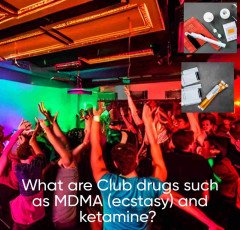
What are Club drugs such as MDMA (ecstasy) and ketamine ?

Club drugs are a subset of recreational drugs that are frequently abused at raves, dance parties, and other nightclub settings.
These substances have a reputation for improving social relations, boosting energy, and changing mood and perception.
The synthetic psychoactive chemical MDMA, sometimes referred to as ecstasy or molly, causes sensations of exhilaration, increased sociability, and emotional openness. It functions by raising the brain's concentrations of serotonin, dopamine, and norepinephrine. However, it can also result in harmful side effects like dehydration, excessive heat, and serotonin syndrome, a disease that may be fatal.
The dissociative anesthetic ketamine, on the other hand, was first created for use in veterinary medicine.
It causes a dissociative or detached condition from reality, frequently referred to as a "k-hole" experience. It can also cause euphoria, relaxation, and changed perceptions of time and space in smaller dosages. Ketamine does have certain drawbacks, though, including the potential for disorientation, hallucinations, and respiratory depression.
In the United States, ketamine and MDMA are both categorized as Schedule I controlled substances, indicating they have a high potential for abuse and no accepted medicinal purpose. When taken with other drugs or used in risky conditions, their use can be harmful and even fatal.
Other forms of club drugs consist of:
GHB (gamma-hydroxybutyrate):
Gamma-hydroxybutyrate (GHB) is a central nervous system depressant that can impair memory and cause drowsiness. Because it can be used to render people helpless and leave them open to sexual assault, it is often referred to as a "date rape" drug.
Rohypnol (flunitrazepam):
Another central nervous system depressant known as rohypnol (flunitrazepam) is frequently used as a "date rape" medication because of its propensity to create sleepiness, memory loss, and decreased inhibitions.
LSD (lysergic acid diethylamide):
Lysergic acid diethylamide, also known as LSD, is a hallucinogen that can distort reality perception, produce vivid visual hallucinations, and disrupt mood and thought processes.
Methamphetamine (meth):
Meth is a stimulant drug that can give users more energy, focus, and self-assurance. Additionally, it may cause risky side effects like psychosis, aggressiveness, and addiction.
Cocaine:
Cocaine is another stimulant that can provide users euphoric, energizing, and self-assured feelings. Additionally, it may result in harmful side effects like heart attack, stroke, and addiction.
Club drug use can be risky and have negative effects on one's short- and long-term health. It's critical to get professional assistance as soon as you can if you or someone you love is battling with drug addiction.
Club drug use is particularly common among young individuals who want to feel more socially connected and enjoy themselves more in public places. The side effects of these medications, however, can be unpredictable and pose a major risk to one's health.
Club drugs can have a number of short-term effects, including:
Beyond these immediate dangers, regular use of club drugs can result in a number of health issues, such as:
It's crucial to get professional assistance if you or someone you know is battling a drug addiction or has suffered harm as a result of using club drugs. Behavioral therapy, medication-assisted treatment, and support groups like Alcoholics Anonymous or Narcotics Anonymous are all possible forms of treatment.
Education, awareness, and harm reduction tactics are used to stop club drug use. Some strategies to lessen the dangers of club drugs include:
The best method to prevent the bad consequences of club drugs is to completely abstain from using them.
Educating yourself and others:
It's critical to get informed on the dangers of club drug use and to spread that knowledge to others.
Setting limits:
If you decide to take club drugs, it's crucial to do so responsibly and to be aware of the dangers of overusing them.
Using a testing kit to check for dangerous chemicals, staying hydrated, taking breaks, and refraining from mixing medicines are some examples of harm reduction techniques.
Seeking professional assistance:
It's critical to seek assistance from a professional as soon as you can if you or someone you love is battling with drug addiction.
In conclusion, recreational drugs that are frequently utilized in social contexts include club drugs like MDMA and ketamine. They can have enjoyable benefits, but they also come with significant hazards and can have a negative impact on one's health. Education, awareness, and harm reduction tactics are used to stop club drug use. It's crucial to get professional assistance if you or someone you love is battling with drug addiction.
There are initiatives to treat the underlying causes of club drug usage, such as social isolation, anxiety, and depression, in addition to these prevention measures. Having supportive social networks, taking care of oneself, and getting professional assistance for mental health issues can all help to lower the risk of club drug usage.
Offering access to drug testing services, expanding access to harm reduction services like needle exchanges, and offering information and tools for safer drug use practices are all efforts to lessen the harms brought on by club drug use. In order to lessen the harmful impacts of club drug usage, community-based programs and harm reduction organizations can be extremely important.
A thorough and diversified strategy that includes education, prevention, harm reduction, and treatment is needed to address the problem of club drug usage. We can contribute to lessen the harms connected with club drugs and build healthier and safer communities by cooperating to address the underlying causes of drug use and offering support and resources for those in need.
It should be noted that club drug use is a problem that is not exclusive to any one area or group of people.
Club drugs can have an impact on people of different ages, races, and socioeconomic backgrounds and are utilized in a variety of social contexts and societies.
Young adults in particular have seen a rise in the usage of club drugs in recent years.
This has prompted public health experts and legislators to pay it more attention. They are attempting to address the problem through a number of techniques, such as enhanced education and outreach initiatives, tougher law enforcement measures, and increased access to treatment and support services.
The ultimate objective is to lessen the negative consequences of club drug usage and to foster safer and healthier communities for all. We can lessen the damages caused by club drugs and build a better, more optimistic future for everyone by tackling this difficult issue as a team.
That's accurate. Club drug use is a problem that requires cooperation from all stakeholders, including people, communities, and politicians. It's crucial to approach the problem from the standpoint of public health, with a focus on prevention, harm reduction, and accessibility to treatment and support services.
Any successful prevention plan must include education and awareness as essential elements.
This entails educating people about the dangers of club drug usage as well as encouraging healthy substitutions and effective stress-reduction techniques. Additionally, it's critical to have frank discussions with young people about the dangers and repercussions of drug use while also arming them with the knowledge and resources necessary to make wise choices.
The negative impacts of club drug use can be lessened through the implementation of harm reduction techniques including drug testing and needle exchange programs. These programs give participants access to hygienic materials and support services, which can help lower the chance of contracting an infection, overdosing, and other health issues.
For those battling drug addiction or other mental health issues, having access to treatment and support services is crucial. This encompasses a variety of services like therapy, medication-assisted treatment, and support groups, all of which can assist people in overcoming their addiction and creating a happier and more rewarding life.
A comprehensive and cooperative strategy that prioritizes prevention, harm reduction, and accessibility to treatment and support services is needed to address the problem of club drug use. We can all live in healthier and safer neighborhoods if we work together to solve this difficult problem.
A change in cultural perceptions of drug use and addiction is necessary in order to address club drug use.
The stigma and shame associated with addiction can keep people from getting help and make it more difficult for communities to handle the problem in a productive way.
It's critical to acknowledge addiction as a medical illness that requires support and therapy rather than a moral failing in order to reduce stigma. This may entail facilitating policies that favor harm reduction and public health over punitive measures and expanding access to research-based addiction treatment.
Encouraging self-care and good coping mechanisms can aid in lowering the prevalence of drug use as a stress and anxiety coping technique. This includes encouraging exercises, mindfulness practices, and therapy as beneficial strategies to reduce stress and enhance mental health.
To understand how drug use and addiction are intertwined.
Addressing these underlying issues is crucial to lowering the prevalence of drug use and addiction. issues including poverty, trauma, and social marginalization can all raise the risk of addiction.
In conclusion, combating club drug use necessitates a multidimensional strategy that incorporates education, harm reduction, prevention, access to treatment, and support services, as well as a change in cultural perceptions about drug use and addiction. We can all benefit from a healthier and more just society if we work together to solve this complicated problem.
That's accurate. Recognizing how the larger social and economic backdrop might influence drug usage patterns and trends is another crucial component in combating drug use in clubs.
For instance, stress and anxiety can be exacerbated by economic and social inequalities, which may raise the likelihood of turning to drugs as a coping technique. Similar to how attitudes regarding drug use can be influenced by social norms and cultural values, drug use and addiction patterns may also be influenced by these factors.
Public health and social policy need to be approached more holistically and systemically to address these underlying social and economic concerns.
This can entail taking steps to make it easier to find cheap housing, extending social safety nets, and supporting laws that lessen social and economic inequality.
In addition, tackling the problem of club drug usage necessitates an understanding of the particular requirements and experiences of various demographics. This includes vulnerable and marginalized groups like people of color, LGBTQ+ persons, and those with disabilities who could encounter more obstacles to receiving support and care.
We can build a more just and equitable society that promotes the health and wellness of all people by addressing club drug usage holistically and from all angles.
Yes, that is accurate. Recognizing how social media and technology might influence drug use trends and patterns is another crucial component in combating drug use in clubs.
People can now access and obtain narcotics, particularly club drugs, more easily because to technology.
By promoting postings or content that romanticize or glamorize drug use, social media sites may also encourage and normalize drug usage.
As a result, tackling the problem of drug use in clubs also necessitates an understanding of how social media and technology have an impact on drug usage trends and patterns. This can entail taking steps to raise public awareness of the dangers of drug usage, promote healthy drug alternatives, and collaborate with tech firms and social media platforms.
To underline that understanding the numerous elements that contribute to drug usage and addiction requires continual research and evaluation in order to solve the issue of club drug use. This covers studies on the patterns and trends of drug use that are influenced by social, economic, and cultural factors as well as studies on the efficiency of prevention and treatment methods.
We can improve the health and safety of everyone in society by tackling club drug usage in a comprehensive and evidence-based manner.
That's accurate. Any strategy for combating club drug usage must include ongoing study and evaluation.
Research can aid in the development of successful preventive and treatment initiatives as well as assist us better understand the complex elements that lead to drug use and addiction.
Understanding the neurobiological and psychosocial factors behind addiction is a crucial area of research.
This can aid in the development of more potent interventions and treatments that deal with the underlying reasons of addiction and encourage sustained sobriety.
Research can also aid in determining the best preventative tactics for certain groups and environments.
Research on the efficiency of harm reduction measures, such as drug testing and needle exchange programs, as well as studies on the influence of social and economic factors on drug use and addiction are all included in this.
To make sure that resources are being used effectively and efficiently, preventative and treatment programs must undergo ongoing evaluation. This includes examining the influence on health outcomes and quality of life as well as the efficiency of particular therapies and programs.
We can better understand the complex factors that contribute to drug use and addiction and create more effective prevention and treatment strategies that promote the health and wellbeing of all people and communities by addressing club drug use in a comprehensive and evidence-based manner.
Yes, continuing education and awareness initiatives are an essential part of any strategy for combating club drug usage. Education may enable people and communities to make knowledgeable decisions about their own health and welfare as well as contribute to raising public understanding of the risks connected with drug use.
Education campaigns may use a range of media and communication channels to reach their target audience and may include specialized message geared at particular populations, such as kids or college students. For instance, campaigns may employ social media, television, or neighborhood outreach activities to encourage healthy habits and increase knowledge of the dangers of drug use.
To remember that successful education programs should be supported by research and tailored to the particular requirements and environments of the target group. To create messaging and resources that are culturally relevant, this may entail collaborating with community organizations, academic institutions, or healthcare practitioners.
It's crucial to promote healthy and positive alternatives to drug usage in addition to education initiatives.
Promoting healthy stress management and mental health practices like exercise, mindfulness, and social interaction may be one approach to do this.
By raising public understanding of the risks connected with drug use, supporting healthy behaviors, and allowing people and communities to make decisions about their own health and welfare, education and awareness initiatives can assist to lower the prevalence of club drug use.
That's accurate. Giving individuals who need it access to efficient preventive and treatment programs is a crucial part of combating club drug usage.
A variety of interventions, including community outreach and awareness campaigns, harm reduction techniques, and school-based education programs, can be included in prevention initiatives. Among other things, harm reduction techniques may provide safe use areas, drug testing services, and needle exchange programs.
It's crucial to give those who are battling with drug use and addiction access to appropriate treatment in addition to preventative efforts.
Treatment plans may combine pharmacological therapies like medication-assisted treatment (MAT) with behavioral therapies like cognitive-behavioral therapy (CBT) or contingency management.
For many people, access to care can be a major hurdle, especially for those who encounter social or economic barriers.
As a result, it's critical to encourage the creation of community-based treatment programs that are targeted to the particular requirements of the population being served as well as policies and programs that expand access to inexpensive and accessible healthcare.
In general, making good prevention and treatment programs accessible is essential for tackling the problem of club drug use and minimizing the harm caused by drug use and addiction. The health and welfare of all people and communities can be promoted by striving to improve access to care and assistance.
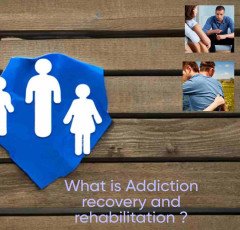

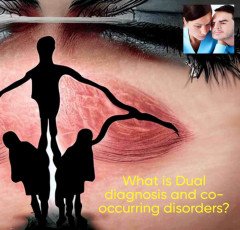
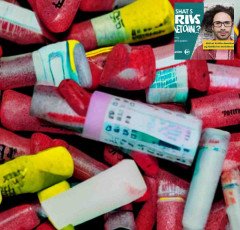




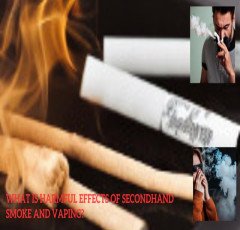

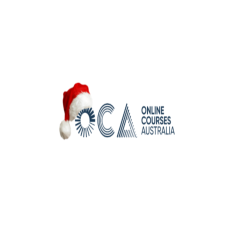




 Stylish Sneakers by Red Tape
Stylish Sneakers by Red Tape  4k Projector For Home
4k Projector For Home  Crocs
Crocs  SOFAS
SOFAS  Kitchen Tap
Kitchen Tap  Echo Dot - Smart speaker with Alexa
Echo Dot - Smart speaker with Alexa  Best Sellers On Amazon
Best Sellers On Amazon  Wristbands
Wristbands 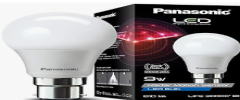 Motion Sensor Light
Motion Sensor Light 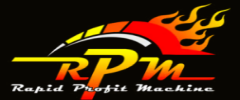 RPM 3.0
RPM 3.0  Hanging Lights For Living Room
Hanging Lights For Living Room  All Wireless Products
All Wireless Products  Best Robotic Vacuum Cleaners
Best Robotic Vacuum Cleaners  Wall Lamp
Wall Lamp  Online Technology Classes
Online Technology Classes  Smart Doorbell
Smart Doorbell  NordLocker
NordLocker 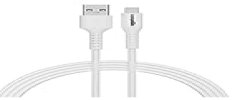 iPhone cable
iPhone cable  Best Home Appliances
Best Home Appliances  Smart Watches
Smart Watches  The Click Engine
The Click Engine  SEO Checklist
SEO Checklist  Realme Smart Phone
Realme Smart Phone  Creative Brief For Video Shoot
Creative Brief For Video Shoot  Pet Care Products
Pet Care Products  Rakhi
Rakhi  The Secret Email System
The Secret Email System  ASUS Laptop
ASUS Laptop  LCD Writing Tablet
LCD Writing Tablet  Apple iPhone
Apple iPhone  Graphics & Design
Graphics & Design  BEST SELLER TOP10
BEST SELLER TOP10  NordPass
NordPass  Men Clothing
Men Clothing  TitTok Revolution
TitTok Revolution  Best Selling Books
Best Selling Books  NordVPN
NordVPN  Unreal Engine 5 For Beginners Learn The Basics Of Virtual Production
Unreal Engine 5 For Beginners Learn The Basics Of Virtual Production  Wireless Gaming Mouse
Wireless Gaming Mouse  Sennheiser
Sennheiser  Duke T Shirts
Duke T Shirts  Dell Laptop
Dell Laptop  Women Fashion
Women Fashion  One World Collection
One World Collection  Artificial Intelligence
Artificial Intelligence 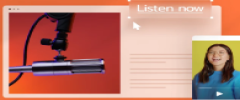 Online Marketing
Online Marketing  Only For The United States
Only For The United States  Air Purifier for Home
Air Purifier for Home  HP Laptop
HP Laptop  Essentials for Gamers
Essentials for Gamers 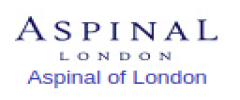 ASPINAL LONDON
ASPINAL LONDON  Samsung Mobile
Samsung Mobile  Bathroom Mirrors
Bathroom Mirrors  Amazon Best Selling Products
Amazon Best Selling Products  Wireless Bluetooth Earphones
Wireless Bluetooth Earphones 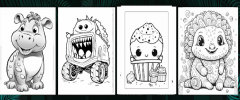 1150+Trendy kids coloring pages Bundle
1150+Trendy kids coloring pages Bundle  ELECTRONIC ACCESSORIES
ELECTRONIC ACCESSORIES  Acer Laptop
Acer Laptop  Hot Bags For Pain Relief
Hot Bags For Pain Relief  Top Rated From Amazon
Top Rated From Amazon  Home Decor Items
Home Decor Items  Kitchen Daily Use
Kitchen Daily Use  Unlimited access to classes on illustration, photography, design, film, music
Unlimited access to classes on illustration, photography, design, film, music  Hello Theme
Hello Theme  Dual USB Car Charger
Dual USB Car Charger  Door Handle Collection
Door Handle Collection  Healthy Ingredients
Healthy Ingredients  Adidas Shoes
Adidas Shoes  Best Phone
Best Phone  Prime Video
Prime Video 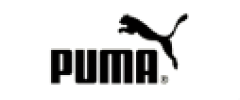 Puma (Clothing & Accessories)
Puma (Clothing & Accessories)  Favorite Company (Cuelinks)
Favorite Company (Cuelinks) 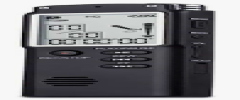 Digital Voice Recorder
Digital Voice Recorder 


















